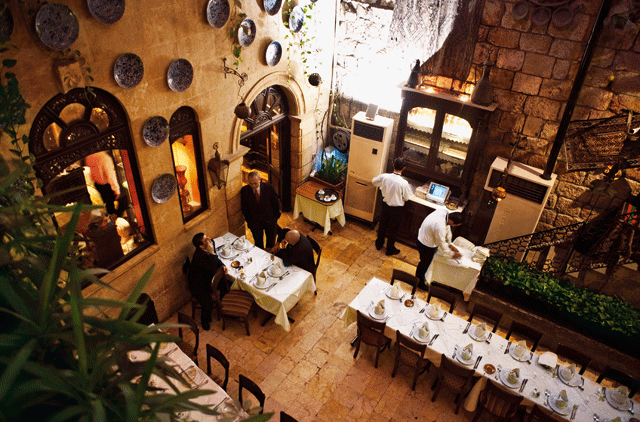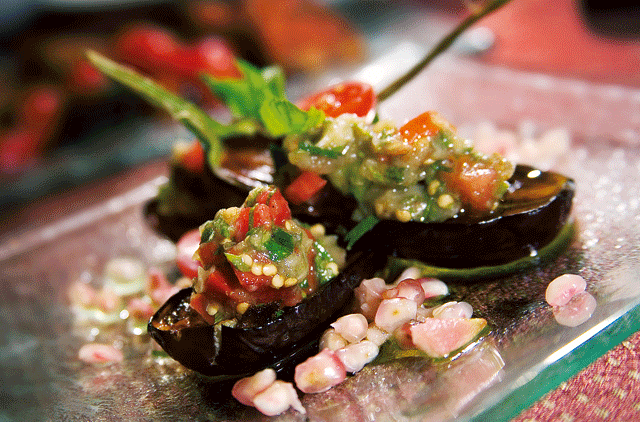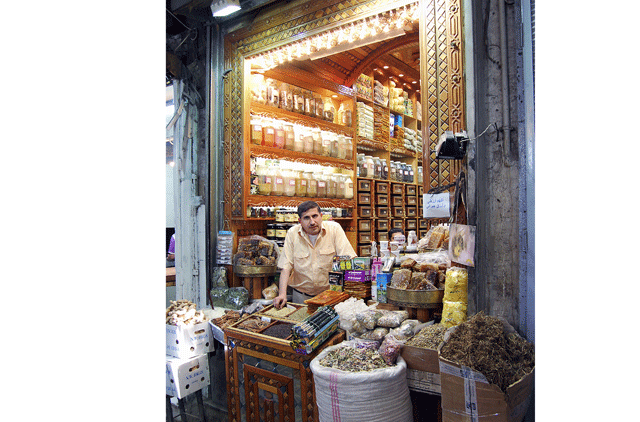
It's 6.30am in Aleppo, and the cobbled backstreets of the Christian neighbourhood of Al Jdeideh are all but deserted. The morning's first rays of sunshine are blearily spreading across shuttered shopfronts, which remain firmly shut. Except for one. Hajj Abdo Al Fawwal is a tiny restaurant that's been feeding the same dish to Aleppo's early risers every day for the last 150 years. And a small crowd is gathering in anticipation of today's fix.
The dish is ful medames, a traditional Syrian favourite of soft-boiled fava beans, served either with tahini or lemon juice and drizzled with red pepper paste and olive oil. But it isn't just the locals who start to clamour for one of the few tables in the cramped dining room - a few inquisitive tourists have joined the ranks to experience one of Aleppo's legendary dining institutions.
In the 55 years that Abu Abdo has been serving his famous ful, he's never quite seen so much interest from foreigners. But tourist numbers are increasing across Syria, and not all of them are coming to see old stones. As spectacular and awe-inspiring as the ancient ruins of Palmyra or the dead cities of the north may be, it appears that Syria's unique cuisine is proving just as big a draw.
From antiquity until the late Middle Ages, Syria's location on the Silk Road allowed it to benefit from a constant stream of people, trade, philosophies and commodities. Among those commodities were spices and ingredients that helped to shape the cuisine, as countless cooking methods and recipes passed through both Aleppo and Damascus.
According to Pierre Antaki of the Syrian Academy of Gastronomy, Aleppo's position as a key trading hub close to the Mediterranean, the Euphrates river and Turkey had a profound effect on its cuisine. "All the spices used to pass by this city to go to Europe. As a smart businessman, you would't just want to see the spices, you'd want to taste them as well. And this is how they kept all the spices in the food."
The city's food has been greatly influenced by the Ottomans and the French, and more recently by Armenian and Kurdish settlers. But its location among fertile lands blessed with abundant fruit orchards has also played a part in creating some distinctive flavour combinations.
At Zomorrod, one of a handful of traditional 17th century courtyard houses that have been recently converted into restaurants, the cherry kebab is one of the most popular dishes. Its combination of savoury minced lamb and sweet fruity sauce is typically Aleppine. "People do have a sweet tooth here," says Antaki. "And when they eat sweets, it's very sweet. It's not like in Europe where they care about diabetes and how much sugar they have in the blood. It has to be sweet."
A ramble through the vast, meandering souk confirms this. Women in black abayas munch on pastries filled with creamy ashta while children stare, mesmerised by the array of baklava arranged in swirls and sprinkled with crushed pistachio. Elsewhere there are mounds of fragrant spices and mountainous heaps of nuts. And the butcher's shops leave nothing to the imagination with their visceral displays of bulging offal and carved animal fat. Although very little in this vibrant and authentic medieval marketplace has been designed for tourists, many still visit to gain a greater appreciation of Syria's food, and thereby its people and culture.
Anissa Helou is a London-based Syrian-Lebanese chef, teacher and cookbook author who operates culinary excursions to the Middle East. She started her Syrian tours just four years ago, but the response has been overwhelming. "I have more interest in my Syrian tours than in those I run to Turkey or Morocco," she says. "Middle Eastern food is the new trend in the west. And it's a cuisine that they don't have much chance of getting to know outside of Syria as there aren't many restaurants serving Syrian food."
While Aleppo is considered by many to be the culinary capital of Syria, a visit to the actual capital city of Damascus is a must. At around 8,000 years old, both claim to be among the oldest continually inhabited cities on earth, which goes some way towards explaining why the food in Syria is probably the most complex and intriguing in the whole of the Middle East.
Yet even at the finest restaurant in Damascus, there's a distinctly Aleppine quality. Al Halabi at the Four Seasons Hotel instantly gives the game away with its name - Halab is the ancient name for Aleppo, which many still use today. The head chef, Mohammed Helal, is also from Aleppo. And his menu is strewn with dishes from his childhood, such as the stunning kibbe safarjaliyye with quince. "This dish is 100 percent Aleppine," he declares. "I learnt it from my mother. I used to sit down with her and watch as she was preparing food - that's why we have so many homely dishes here."
There's no doubt that Aleppo's influence reaches far and wide. But from the grandiose portals of Al Halabi, to the dusty streets of the old city of Damascus, food still punctuates the pulse of life in this ancient city.
Whole families slurp on top-heavy ice cream cones as they stroll through the main thoroughfare of the Al-Hamidiyeh souq. A scoop's throw from the old Roman archway by the Great Umayyad Mosque is Bakdash, which has been selling its famous ice cream since the 1880s. The booza ice cream here is another legendary Syrian delicacy that's been shaped by its Ottoman past. The ice cream is pounded with mastic and sahlab or ground orchid root, which provides its characteristic elasticity, and is served with a topping of ground pistachio nuts.
Like old Abu Abdo in Aleppo, Bakdash is emblematic of the Syrian love affair with food. It's an affair that's sometimes grounded in nostalgia and sentimentality. But when food feels as good as it tastes, who's going to complain?
Where to eat
Zmorod
Aleppine specialities - cherry kebab, yabrak hot vine leaves stuffed with meat and rice, and sujuk sausages rolled in flat bread and sliced - in a stunning 17th century courtyard.
Raheb Bouhaira Street, Al Jdeideh, +963 (21) 211 5777, www.zmorod.com
Sissi House is a nice little restaurant in an old townhouse in the Al Jdeideh quarter. +963 (21) 221 9411
Al Halabi
Homely food served restaurant-style in the splendour of the best restaurant in Damascus. Try the kibbe safarjaliyye with quince, the spicy cheese borek and the fine kebabs. Four Seasons Damascus, Shukri Al Quwatli Street, +963 (11) 339 0900, www.fourseasons.com/damascus
What to see
In Aleppo
The imposing citadel looms large over the Old City, and is home to some impressive ruins and exhibits dating back hundreds of years. It's right next to the snaking network of souqs that rank among the most authentic and atmospheric in the Middle East.
In Damascus
The National Museum (Shukri Al Quwatli Street) is a treasure trove of artefacts from Syria's past, but to see the beating heart of the city, take a walking tour of the Old City.
On a day trip
Palmyra is one of the world's great ruins. The City of Palms was founded by the Romans in the 2nd century AD.
What to buy
Pick up some unique Aleppine olive oil soap from the souq. Go for the bars that are brownish on the outside and olive green on the inside - they're the oldest and best. No trip to Damascus would be complete without a trip to Ghraoui, the famous Syrian chocolatier (Abu Roumaneh Street, +963 (11) 332 3350), where you can pick up gift boxes of fawakeh mujaffafa (dried fruits coated in sugar syrup).
How to get there
FlyDubai flies to both Aleppo (from Dh975) and Damascus (fromDh1,025) from Dubai, www.flydubai.com




